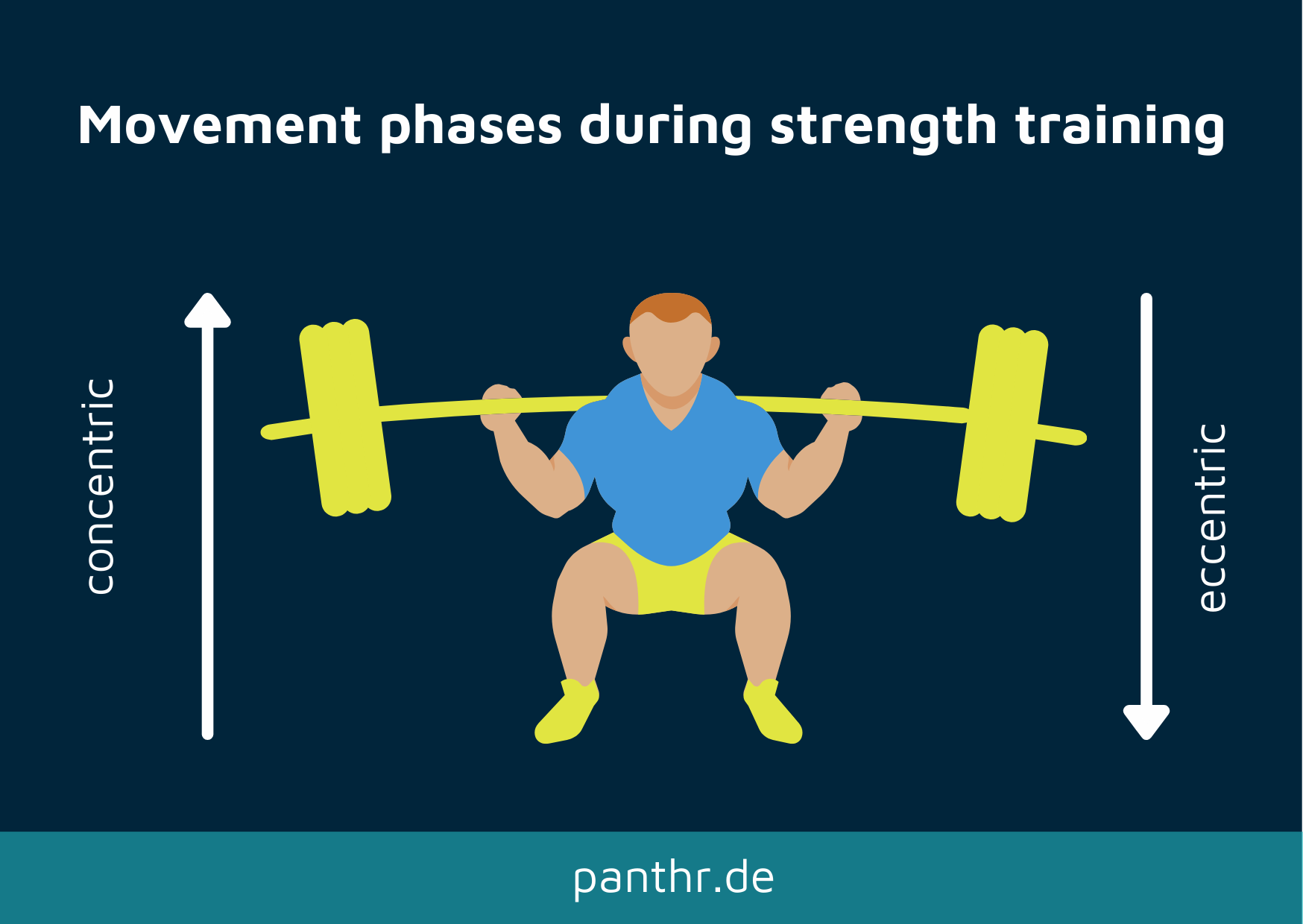What makes eccentric training so valuable
What makes eccentric training so valuable

In everyday language, „eccentric“ often has a negative ring, referring to behaviors that seem unusual or offbeat. In strength training, however, this term takes on a powerful meaning. Most athletes tend to emphasize the concentric, or lifting, phase of an exercise. Yet the eccentric, or lowering, phase holds untapped potential for boosting strength. Let’s take a closer look at why this aspect of training deserves more attention.
What is Eccentric Training?
The eccentric phase, also known as the „negative“ phase, is the part of a movement where the muscle lengthens under tension. In a squat, for example, this is the descent toward the ground. Many athletes overlook this phase, focusing instead on the concentric phase because it feels more intense due to muscle contraction. However, intentionally engaging in the eccentric phase is essential to building a balanced and resilient strength foundation.
Why Both Phases Matter
To maximize strength gains, both concentric and eccentric movements are crucial. Incorporating dedicated eccentric training sessions can offer substantial benefits, particularly for athletes focused on increasing strength and muscle mass. Below, we’ll introduce three effective techniques to integrate into your workouts for optimal results.

Eccentric Training and Muscle Growth
Though it may feel less challenging, the eccentric phase has a profound impact on muscle development. Research indicates that the forces generated during this phase can be 20 to 60 percent greater than in the concentric phase. While the lifting phase sparks muscle growth, the lowering phase can lead to even greater hypertrophy due to the unique stress it places on muscles. As muscle fibers lengthen under tension, they undergo small, intentional damage, which the body repairs by building stronger tissue, driving growth over time.
Additional Benefits of Eccentric Training
Eccentric training offers another advantage: despite the high force required, it is relatively energy-efficient. This allows athletes to train with heavier weights for longer without fatigue. The increased muscle tension during eccentric movements activates fast-twitch fibers, which are key to gaining muscle thickness and strength. This form of training has also shown benefits in rehabilitation settings, as it enhances muscle activation without excessive energy output. Discover the following four eccentric training methods to take your strength training to the next level.
The 2:1 Method
The 2:1 ratio in eccentric training refers to spending twice as long on the eccentric (lowering) phase of an exercise compared to the concentric (lifting) phase. This approach is believed to enhance muscle growth and strength gains. Here’s a breakdown of the concept:
- Choose a weight that allows you to maintain control during the eccentric phase.
- Lower the weight for 2 seconds during the eccentric phase.
- Lift the weight in 1 second during the concentric phase.
- Maintain this tempo throughout your set.
This ratio is based on the idea that eccentric contractions can produce greater force and potentially stimulate more muscle growth than concentric contractions.
Benefits of the 2:1 Ratio
- Increased muscle tension: The longer eccentric phase increases time under tension, which may lead to greater muscle growth.
- Enhanced strength gains: Eccentric training performed at higher intensities is more effective in promoting increases in muscle mass and strength.
- Improved muscle fiber recruitment: The controlled lowering phase may activate more muscle fibers, particularly high-threshold motor units associated with muscle growth.
- Potential for greater hypertrophy: Some studies suggest that eccentric-focused training can lead to superior muscle growth compared to traditional concentric-eccentric training.
The 2-Phase Technique
Suitable for any multi-joint exercise, this technique involves completing the concentric phase at a normal speed, then extending the eccentric phase for about five seconds. Aim for 3 to 5 sets using 80% of your maximum strength, with rest periods of 1 to 2 minutes between sets. The muscles will likely burn during the slow eccentric phase, so maintain proper form, even as fatigue sets in. Because this technique uses heavy weights, consider training with a partner for assistance.
Fast Eccentric Phase
Instead of slowing down the eccentric phase, this method emphasizes a quick descent, while maintaining a normal pace for the concentric phase. This approach is ideal for athletes focusing on explosive strength. Use 80% of your maximum strength, performing 3 sets of 8 to 12 reps, with rest intervals of 1 to 2 minutes. Advanced athletes may increase the load to 90% of their maximum strength for greater challenge.
What You Need to Know About the Fast Eccentric Phase
- Increased strength gains: Research suggests that faster eccentric movements may lead to superior strength improvements compared to slower eccentric tempos. A meta-analysis indicated that fast movement tempos tended to favor greater gains in muscular strength, although the difference was not statistically significant
- Better performance in specific exercises: One study showed that a faster eccentric phase resulted in greater increases in 1RM squat performance compared to a slower eccentric phase.
- Neurological adaptations: Faster eccentric movements may promote better neurological adaptations, which contribute to strength gains. This could be due to the specific neural patterns associated with eccentric actions.
- Time efficiency: Faster eccentric movements allow for more repetitions in a given time frame, potentially increasing overall training volume and efficiency.
- Sport-specific training: For many athletic movements, the eccentric phase occurs quickly. Training with faster eccentrics may better mimic real-world sporting actions and improve transfer to performance.
- Reduced fatigue: Eccentric contractions require less oxygen and energy compared to concentric contractions. Performing them quickly may further reduce the overall energy expenditure of the workout, potentially allowing for higher training volumes or frequencies.
- Variety in training: Incorporating different eccentric tempos, including fast ones, can add variety to workouts and potentially stimulate different adaptations.
